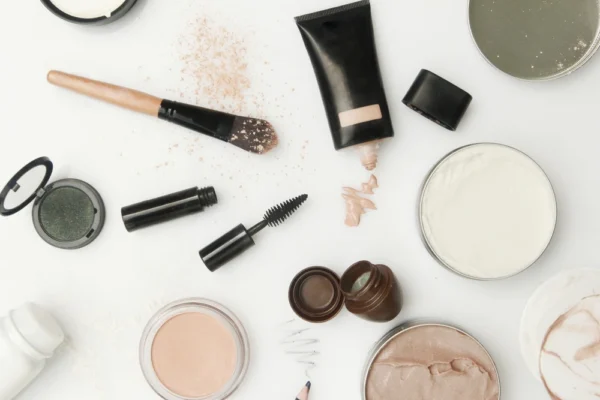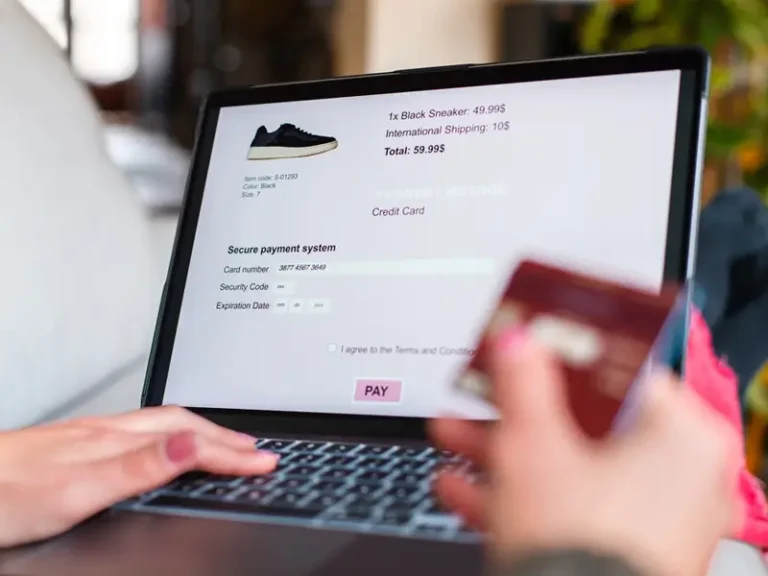Today’s beauty brands offer a perfect blend of digitisation, personalisation, inclusivity, and customer engagement tactics that any direct-to-consumer (DTC) beauty brand ecommerce marketing team can take inspiration from. Global revenues in the beauty and personal care market are projected to exceed $128.7 billion by 2030, a 4.8% compound annual growth rate from 2020 to 2030. This consumer market is proliferating and includes skincare, haircare, and beauty products from both legacy and challenger brands. Despite the COVID-19 pandemic, the market remains resilient, with notable mergers and acquisitions in 2020.
The current opportunity for growth in the health, wellness, and beauty industry is immense for DTC brands. However, with added opportunity comes increased competition. To stand out, brands need to leverage a mix of digitisation, personalisation, inclusivity, customer engagement, and product innovation. Here are five examples of DTC beauty brands doing it right and the tactics any DTC retailer can use.
1. Fenty Beauty wins with inclusive shade range and international ecommerce
Inclusivity and diversity are the heart of Rihanna’s $3 billion beauty brand. Launched on September 8, 2017, Fenty Beauty is known for an inclusive shade range and a modern, globally minded approach to beauty. Fenty Beauty reached $72 million in earned media value in its first month and $570 million in revenue after only 15 months on the market. More than Rihanna’s star power and the brand’s innovative products and packaging, what truly sets Fenty Beauty apart is the brand’s dedication to inclusivity. Upon launch, Fenty Beauty’s Pro Filt’r foundation initially launched with 40 shades. They have since expanded to 50. With most designer cosmetics companies offering at most 30 foundation shades, the majority of which cater only to fair and medium skin tones, the Pro Filt’r Foundation launch was truly innovative, with a wide selection of deep tones that was long overdue.
While Rihanna is the face of Fenty Beauty, the cult brand is rooted in a partnership with Parisian luxury conglomerate LVMH Moët Hennessy Louis Vuitton (LVMH). Rihanna had previously collaborated with other brands including M.A.C. Cosmetics, Parlux Ltd. Fragrances, and Puma. For her eponymous brand, the artist and fashion icon chose to work with LVMH’s Kendo Beauty division. This move provided access to the infrastructure required to launch the brand across 17 countries and over 1,600 stores.
While LVMH subsidiary Sephora was critical to Fenty Beauty’s success, it is their DTC ecommerce strategy that provides the most value from a customer relationship standpoint. The brand chose an international and digital-first sales and distribution strategy, making Fenty Beauty available to purchase directly from the online site.
Rihanna’s beauty brand leveraged an omnichannel approach from the start to ensure a unified customer experience. The DTC beauty brand site reflects diversity and inclusivity on the front end, while a robust, scalable ecommerce platform powered the back end. The brand’s social media highlights real customers—both men and women, many with deeper skin tones—a welcome departure from the beauty marketing of yesteryear that finally sends a message of true inclusivity and a definition of beauty that can truly fit everyone.
2. Drunk Elephant takes deliberate approach to global expansion
Not even a decade old, Drunk Elephant is now a household name in the homes of many skincare lovers. Tiffany Masterson founded the line in 2012. In the process of creating effective, Instagram-ready skincare products, Masterson also created a new category altogether: biocompatible.
Biocompatible skincare focuses on products with pH levels close to that of the skin. This challenger brand quickly seized on a niche other legacy brands had failed to recognise — consumers who want skincare products made with natural ingredients they can pronounce, not chemical compounds.
How did Drunk Elephant go from a small skincare startup run out of Masterson’s Dallas, Texas, home to a Shiseido subsidiary with hundreds of millions of dollars in revenue in just eight years? Much of it comes down to conversation and social sharing. The brand gained traction through early testimonials, customer reviews, and feedback from buyers. The DTC beauty brand website reflects this same consumer-first focus with punchy, easy-to-digest descriptions. Even the brand’s logo of a hand-drawn elephant feels accessible and authentic.
Drunk Elephant’s global expansion also occurred at a deliberate, methodical pace. The skincare brand has used a blend of pop-up stores, retail partnerships with Sephora, and DTC strategies in North America, UK, Singapore, Australia, Philippines, Malaysia, Thailand, mainland China, Hong Kong, and Germany. Each country’s Drunk Elephant website is completely localised. Their ecommerce localisation strategy includes language, shipping, tax, shipment methods, and SEO.
Masterson spoke with Business Insider in September 2019 about the company’s global success, “We don’t ever launch without people on the ground. We really believe that we have our own people on the ground to maintain and support the brand so that we can make sure the vibe and vision remain intact. You don’t lose control of the brand that way.” This commitment to Drunk Elephant’s mission paid off with Shiseido’s purchase of the brand just a month later at $845 million.
3. The Ordinary makes clinical-grade skincare accessible via social media
The Ordinary’s success story is anything but ordinary. In a market full of sleek packaging and high price tags, The Ordinary’s bare-bones, affordable skincare line has won the hearts of even the most discerning DTC beauty brand buyers. In 2016, Brandon Truaxe started the sub-brand as part of his larger skincare company Deciem. Frustrated with the lack of transparency and affordability in the skincare industry, Truaxe started The Ordinary to offer exceptional skincare products at an affordable price point or, as their tagline puts it, “Clinical formulations with integrity.”
Despite the medical-grade names, consumers do not need a chemistry or dermatology background to understand the product line. The brand leans heavily on video content and influencers to explain how to best use its collection of cleansers, serums, and treatments, explaining the science behind how retinoids, peptides, and antioxidants work on the skin.
This strategy has helped The Ordinary maintain its incredibly low price points. In a market where three-digit price tags are common, The Ordinary’s products generally hover between USD$5 and USD$10. Instead of relying on advertising, the skincare brand capitalises on social sharing through user-generated content on platforms including Instagram, TikTok, YouTube, and Cherie, encouraging a sense of community and learning.
While accessibility plays a large role in the company’s success, urgency is another. The company’s best-selling products are often sold out. Posts on the Ordinary’s subreddit frequently bemoan sell-outs. Buyers can sign up for notifications when products are back in stock or search for them on a retail partner’s site.
4. Charlotte Tilbury pioneers the digital-first beauty experience
Charlotte Tilbury is one of the most successful digital-first DTC beauty brands. Founded by the famous British makeup artist in 2012, Charlotte Tilbury offers luxury products to discerning customers. To justify the high price tags, the brand has leveraged the makeup artist’s reputation and expertise. Tilbury frequently shares tutorials on the company’s YouTube, Instagram, Facebook, and TikTok profiles. From packaging, ingredients, and application, the brand’s social content showcases what makes the product line so premium. The world’s top fashion models and icons often make an appearance as well. Charlotte Tilbury’s 360-degree virtual reality experience— a first in the industry—starred Kate Moss.
Loyalty programs also play a large role in the company’s success. In 2019, Charlotte Tilbury launched the Magic Makeup Stars program. This brand ambassador program, targeted toward makeup artists, offers exclusive promotional codes and commissions for participants. It also reinforces both the company’s positioning as a brand for beauty professionals and industry insiders.
Spanish fragrance house Puig acquired a majority stake in Charlotte Tilbury in 2020. This acquisition should allow for greater expansion into the Chinese market, where the brand has already had significant success.
5. Glossier builds a community, then a brand

Glossier began in 2010, when Vogue fashion assistant Emily Weiss started her beauty and lifestyle blog, “Into The Gloss.” There were countless blogs showcasing “outfits of the weeks” and makeup hauls during this time. But “Into The Gloss” focused on beauty and skincare, highlighting the beauty routines and favourite products of normal women everywhere. Weiss took the insights from her community of followers on “Into The Gloss” and built a beauty line just for them. “Into The Gloss” built a community before it built its brand, Glossier.
Glossier started as a DTC beauty brand but has since opened retail locations and, in 2022, inked a wholesale deal with Sephora. Glossier has been able to successfully bridge the gap between blogs and social media through its active community. Its Instagram page alone has over 2.7 million followers. On Glossier’s social media profiles, you will find a mix of customer reviews, product promotions, timely memes and influencer content. These profiles remain the company’s primary customer acquisition avenues. Loyal customers are rewarded through Glossier’s referral program. Products are also sold on ambassador pages, which offer Glossier representatives commission and credits.
Develop your own successful ecommerce strategy
Cult beauty brands prove that smart marketing and ecommerce strategies lead to success in the DTC sector. Businesses can drive sales by employing similar methods:
- Capitalising on omnichannel customer experiences like Fenty Beauty
- Focusing on website localisation and untapped sales niches like Drunk Elephant
- Promoting social sharing and user-generated content like The Ordinary
- Building digital-first experiences in branding and ecommerce like Charlotte Tilbury
- Creating an interactive community of customers as a sales base like Glossier
Companies do not have to start out in DTC to find success. The right ecommerce solution can open the door to new possibilities and increased sales.
Ready to take your product lines to new and existing customers at home and around the world? Schedule a call with an ecommerce and cross-border expert at ESW and find the solution that’s right for your business.





